Dear Z, Today’s Lovers’ Chronicle from Mac Tag to his muse. I agree with Mac Tag’s comment at the end. What about you Zazie? Rhett
The Lovers’ Chronicle
Dear Muse,
this question asked
once ago;
“Listen, have you ever been…”
and the answer then,
no, of course
i knew it happened
now and then
and that it could be
everything
we made love that night
and i believed
© copyright 2021.2023 mac tag/cowboycoleridge all rights reserved
© copyright 2020 mac tag/cowboy coleridge all rights reserved
tryin’ to be
a good steward
of what i have
protectin’ my time,
now that it is mine
feedin’ the vision,
avoidin’ the noise
havin’ good verse
and melodies
in my ears
callin’ out beauty,
and not shyin’
from sorrow
bein’ by myself
you know
just passin’ by
© copyright 2018 mac tag/cowboy coleridge all rights reserved
“Listen, have you ever been…”
no
“Well, it happens now and then
and it is wonderful.”
we made love that night
and i believed her
up until i rode away
© copyright 2017 mac tag/cowboy Coleridge all rights reserved
Stars begin to lighten
the earlier blackness
From the wide flat sweep
blows a cool wind, fragrant
with the breath of sage
Keepin’ close to the edge
of the cottonwoods,
swiftly and silently westward
sinkin’ down in the gloom,
waitin’, listenin’
The pale starlight affords
indistinct sight, but eyes
keen and used to the dark,
recognize…
Then, farther out on the sage,
a horsemen passes by,
almost without sound,
specter like
meltin’ into the night
© copyright 2016 Mac tag all rights reserved
Today is the birthday of Carl Heinrich Bloch (Copenhagen, May 23, 1834 – February 22, 1890); Danish painter.
Bloch met his wife, Alma Trepka, in Rome, where he married her on 31 May 1868. They were happily married until her early death in 1886. The sorrow over losing his wife weighed heavily on Bloch, and being left alone with their eight children after her death was very difficult for him.
Bloch died of cancer on 22 February 1890. His death came as “an abrupt blow for Nordic art” according to an article by Sophus Michaelis. Michaelis stated that “Denmark has lost the artist that indisputably was the greatest among the living.” Kyhn stated in his eulogy at Bloch’s funeral that “Bloch stays and lives.”
Gallery

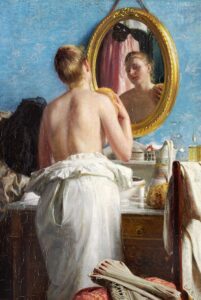
Woman at her toilet
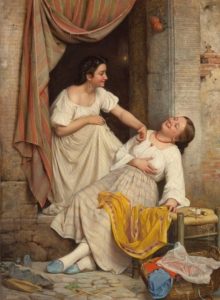

Kristus i Gethsemane have, RM 203a, 1865-1879,



-

Skuespilleren Kristian Mantzius i sit studereværelse, 1853, Den Hirschsprungske Samling
-

Samson hos filistrene, 1863, Statens Museum for Kunst
-

Fra et romersk osteria, 1866, Statens Museum for Kunst
-

Den syttenårige Prins Christian (Chr. IV), Det Nationalhistoriske Museum på Frederiksborg Slot
-

Landskab med hus og have ved havet, aften, Ellekilde, 1880, Den Hirschsprungske Samling
-

Portræt af stiftsprovst, dr. theol. P.C. Rothe, 1881
-
Gallery

Portrait by Olaf Isaachsen (1863)
|
|
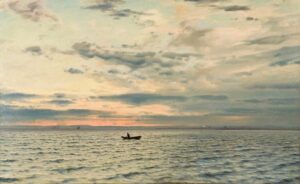
Late in the day
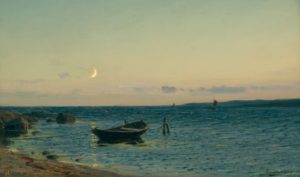
-

Morning at Ny-Hellesund (1885)
-

View of a Fjord (1890)
-

People on the Beach (1894)
-

Evening at Frederiksstad (1909)
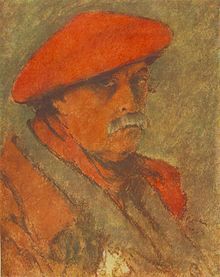
Today is the birthday of Luis Ricardo Falero (Granada; May 23, 1851 – December 7, 1896 London); painter. He specialized in female nudes and mythological, orientalist and fantasy settings. His most common medium was oil on canvas. Falero’s paintings are held mostly within private collections in Europe and the United States, although a watercolour of the ‘Twin Stars’ is in the collection of the Metropolitan Museum of Art, New York.
Falero had a particular interest in astronomy and incorporated celestial constellations into many of his works, such as “The Marriage of a Comet” and “Twin Stars”. His interest and knowledge of astronomy also led him to illustrate the works of Camille Flammarion.
In 1889, in Rochford, Essex, Falero married Maria Cristina Spinelli, and in 1891 they were living at 100 Fellows Road, Hampstead. His wife was Italian and had a connection with Atina in the Province of Frosinone.
In 1896, the year of his death, Maud Harvey sued Falero for paternity. The suit alleged that Falero seduced Harvey when she was 17, first serving as his housemaid, and then model. When he discovered she was pregnant, he dismissed her. She won the case and was awarded five shillings per week in support of their child.
Falero died at University College Hospital, London, at the age of 45, leaving an estate valued for probate at £1,139. His widow María Cristina Falero was his executrix.
Gallery
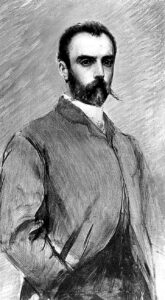
Self portrait oil on canvas
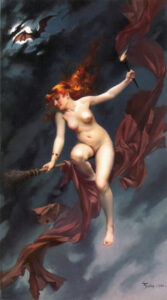
Festival of the Witches (1880)

The Balance of the Zodiac
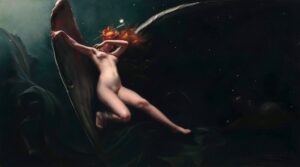
A Fairy Under Starry Skies.
Today is the birthday of József Rippl-Rónai (Kaposvár, Hungary; 23 May 1861 – 25 November 1927); painter. He first introduced modern artistic movements in the Hungarian art.
He believed that for an artist not only is his body of work significant, but also his general modus vivendi, even including the clothes he wore. He thus became interested in design, which led to commissions such as the dining room and the entire furnishings of the Andrássy palace, and a stained-glass window in the Ernst Museum, (both in Budapest). Between 1911 and 1913 his exhibitions in Frankfurt, Munich and Vienna were highly successful. His last major work, a portrait of his friend Zorka, was painted in 1919, and in 1927 he died at his home, the Villa Róma in Kaposvár.
Gallery
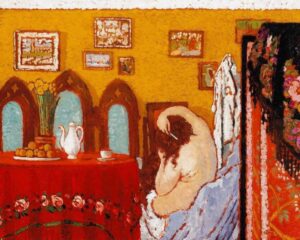
Woman Combing Her Hair
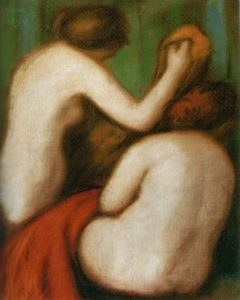
After the bath

Park with nudes
-

Parisian Woman (1891)
-

My Father and Uncle Piacsek with Red Wine (1907)
-

Studio at Kaposvár (1911)
-

Still-life with Mask (1910)
-

Woman with Three Girls (1909) Brooklyn Museum
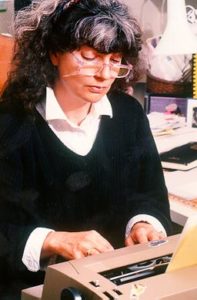 And on this day in 1947, poet Jane Kenyon was born in Ann Arbor, Michigan. She married fellow poet Donald Hall and they lived on his family’s farm in New Hampshire. Kenyon said…
And on this day in 1947, poet Jane Kenyon was born in Ann Arbor, Michigan. She married fellow poet Donald Hall and they lived on his family’s farm in New Hampshire. Kenyon said…
“Be a good steward of your gifts. Protect your time. Feed your inner life. Avoid too much noise. Read good books, have good sentences in your ears. Be by yourself as often as you can. Walk. Take the phone off the hook. Work regular hours.”
“A poet’s job is to find a name for everything: to be a fearless finder of the names of things.”
Hall wrote: “[W]e got up early in the morning. I brought Jane coffee in bed. She walked the dog as I started writing, then climbed the stairs to work at her own desk on her own poems. We had lunch. We lay down together. We rose and worked at secondary things. I read aloud to Jane; we played scoreless ping-pong; we read the mail; we worked again. We ate supper, talked, read books sitting across from each other in the living room, and went to sleep. If we were lucky the phone didn’t ring all day. In January Jane dreamed of flowers, planning expansion and refinement of the garden. From late March into October she spent hours digging, applying fifty-year-old Holstein manure from under the barn, planting, transplanting, and weeding.”
That near about describes a perfect existence. How I wish I had that with you, Muse.
Mac Tag
Follow us on twitter @cowboycoleridge


No Comments on "The Lovers’ Chronicle 23 May – passin’ by – art by Carl Bloch, Amaldus Nielsen, Luis Ricardo Falero – & József Rippl-Rónai – birth of Jane Kenyon"